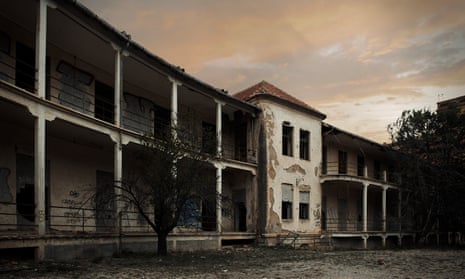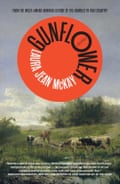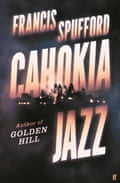Part One
Morrison was waiting for someone who was hung up in the air traffic jam over Kennedy International when he saw a familiar face at the end of the bar and walked down.
'Jimmy? Jimmy McCann?'
Part One
Morrison was waiting for someone who was hung up in the air traffic jam over Kennedy International when he saw a familiar face at the end of the bar and walked down.
'Jimmy? Jimmy McCann?'

The Ledge
by Stephen King
Narrated by John Glover
https://esl-bits.eu/ESL.English.Listening.Short.Stories/The.Ledge/01/z.mp3
'Go on,' Cressner said again. 'Look in the bag.'
We were in his penthouse apartment, forty-three stories up. The carpet was deep-cut pile, burnt orange. In the middle, between the Basque sling chair where Cressner sat and the genuine leather couch where no one at all sat, there was a brown shopping bag.
The Man in the Black Suit
by Stephen King
I am now a very old man and this is something which happened to me when I was very young—only nine years old. It was 1914, the summer after my brother Dan died in the west field and three years before America got into World War I. I’ve never told anyone about what happened at the fork in the stream that day, and I never will … at least not with my mouth. I’ve decided to write it down, though, in this book which I will leave on the table beside my bed. I can’t write long, because my hands shake so these days and I have next to no strength, but I don’t think it will take long.
 |
| Stephen King |
Did you know that there are over 130 Stephen King short stories in existence? There’s no doubt that the man’s publishing career is impressive, but King was perhaps most prolific with his short stories: starting with "The Glass Floor" in 1967, he continued to write many short stories thereafter to pay the bills.
 |
| Torres’s book is set in a desiccating mansion in a nameless border town. Photograph: Merche Portu |
A marginalised history is salvaged from real‑life medical records in this strange and glorious novel
I

BOOK OF THE DAY
An Anglo-Saxon saint speaks down the centuries in a sensational piece of storytelling about Britain’s past and present
C
uddy is the affectionate name for Saint Cuthbert of Lindisfarne (c634-687), a shepherd boy born in the Border country who rose to become prior of Melrose Abbey and who ended his life as a hermit on a tiny, inhospitable island off the coast of Northumbria. Cuthbert is one of Britain’s most popular saints, widely venerated for his affinity with animals, his sympathy for ordinary working people and his association with the landscapes and holy places of the north of England. At the time he died, Christianity was a relatively new religion in Britain. Following his interment on Lindisfarne, Cuthbert’s remains were removed to the mainland in order to prevent their desecration by invading Danes. Loyal monks and shifting bands of followers conveyed Cuthbert’s coffin to Chester-le-Street, where it remained until 995, when Viking invaders again made it necessary to move it to safety. It is on the final leg of this journey that Benjamin Myers’s novel opens, with the great cathedral, founded in Cuthbert’s honour in 1093 at what will later be Durham, still nothing but a holy vision of his most fervent disciples.
Cuddy is divided into four parts, with an additional prologue and interlude. In order to fully disentangle the mostly factual from the possibly fictional, you would need to immerse yourself in the surfeit of sources liberally quoted by Myers in his construction of this literary edifice. You may well be inspired to do so, if only to prolong your acquaintanceship with its landscapes and people; but you might equally embark on this journey as I did, knowing next to nothing about the titular figure, and find yourself swept along on a tide of pure literary sensation.
The first part of the novel, Saint Cuddy, is told in the voice of Ediva, an orphan taken in by the monks as a child, now travelling with them as healer, cook and helper as they search for a final resting place for Cuddy’s coffin. Ediva is alive to the rhythms of the landscape in a way that marks her out as different; she also sees visions of the future cathedral – a building “bigger than anything man has ever built, so big it rears up like a mountain, like a great beast” – where the saint will finally be laid to rest.
Book two, The Mason’s Mark, carries us forward to 1346. Fletcher Bullard – champion archer, domestic abuser – is off fighting the Scots. When his wife, Eda, meets Francis Rolfe, one of a team of masons engaged in repairing and enhancing Durham Cathedral’s decorative stonework, what occurs will live on in the stone.
Book three, The Corpse in the Cathedral, finds us in the company of a 19th-century Oxford professor, Forbes Fawcett-Black, invited to witness the opening of Cuthbert’s tomb. Entertaining though the professor is, with his insufferably cocksure tone and almost cartoonish hatred of the north of England, he initially had me wondering if Myers had committed a misstep. The increasingly serious turn taken by this chapter had the effect of removing my doubts, as well as shaking the professor’s loudly proclaimed contempt for the ineffable. Forbes Fawcett-Black resembles those unfortunate scholars dreamed up by MR James, whose much verbalised confidence in the scientific pursuit of knowledge is no defence against the darker forces they have dismissed as superstition. The Corpse in the Cathedral is a ghost story all the more satisfying for being populated by ghosts we have already met.
The final part of the novel, Daft Lad, brings us at last to the present, or rather the very recent past of 2019. Michael Cuthbert lives with his dying mother in a village three miles outside Durham. He never knew his father, who has done time in prison, and his lack of qualifications leaves him dependent on zero-hours labouring contracts. After an off-the-books job removing old asbestos, Michael is offered a stint of lifting and carrying at Durham Cathedral, where his personal history and unconscious heritage combine to open his eyes to a world that has previously seemed closed to him.
One of the many pleasures of Cuddy lies in spotting the multitude of links between the chapters. There is always an owl-eyed youth, a provider of victuals and seer of visions, a bad monk and a violent man, their prominence ebbing and flowing from story to story. Always and throughout there is the voice of Cuddy, speaking to them in dreams, borne on the wind and in the sound of the sea, passed down the generations through the memories and cherished relics of those who went before.
The language of this novel is as essential to its storytelling as the characters. Ediva’s narrative in book one dances off the page in a free-flowing, discursive stream, forever on the point of coalescing into more formal poetic structures. Book two is delivered in monolithic slabs of language, monumental as the blocks of stone that made the cathedral itself. The playscript of the interlude and the ornate pastiche of the Victorian ghost story lead us to the rich and resonant prosody of the final section, its twin emphasis on sense of place and societal disjuncture keenly familiar from Myers’s previous work in novels including The Gallows Pole and The Perfect Golden Circle.
Michael Cuthbert’s connection with the landscape is of an intensity we might expect from a character in an Alan Garner novel. Michael’s elegiac, impassioned narrative, with its layered connections back to earlier chapters, sets the seal on a novel that has far more to say about who we are as a nation, where we came from and where we are headed than any number of more self-consciously political “state of England” novels. Myers’s experience as a writer shows in his elliptical approach to history and those who make it, and his willingness to take on complex material that retains its mystery even as it compels further discussion. The symbiosis of poetry and story, of knowledge and deep love, marks out Cuddy as a singular and significant achievement.
Cuddy by Benjamin Myers is published by Bloomsbury.

From Paul Murray’s The Bee Sting to Zadie Smith’s The Fraud, and a companion to Nineteen Eighty-Four – this year’s fiction highlights
The book I’ve recommended most this year – and had the most enthusiastic feedback about, a whopping 656 pages later – is without doubt Paul Murray’s Booker-shortlisted tragicomedy, The Bee Sting (Hamish Hamilton). This story of an Irish family’s tribulations told from four points of view combines freewheeling hilarity with savage irony, surprise reveals and generations-deep sadness; it offers the immersive pleasures that perhaps only a fat family saga can bring. It lost out on the night to Paul Lynch’s Prophet Song, a harrowing portrait of a totalitarian Ireland with an urgent message for a world of rising political violence.
There was another long-awaited return to fiction from 2013’s Booker winner Eleanor Catton. In Birnam Wood (Granta), idealistic guerrilla gardeners in New Zealand run up against a ruthless billionaire. This is a propulsive thriller responding to the climate crisis, apocalyptic thinking and political ideology, and as stylishly written as you’d expect. Zadie Smith also took on a new genre with her first historical novel, The Fraud (Hamish Hamilton), which sets a gently comic portrait of 19th-century literary London, and a real-life trial which stirred up passionate emotions around class and identity, against harrowing testimony from a slave plantation. It expertly links Jamaican and British history, and offers a timely, quizzical reflection of our current age of globalisation and hypocrisy. Nigerian-American author Teju Cole’s Tremor (Faber) is deeply engaged with the horrors of colonialism, using autofiction for a subtle and up-to-the-minute study of how ideas around art, value and trauma are inflected by historical knowledge.
Sebastian Barry’s beautiful, nightmarish Old God’s Time (Faber) also digs back into the past, to show how trauma remains an open wound. A retired Irish policeman’s apparently calm life is torpedoed by historical experiences of abuse within the Catholic church: this raw and hugely moving novel is shot through with the force of familial love and mourning. There was more brilliant Irish writing about family in Claire Kilroy’s Soldier Sailor (Faber), unbearably tense yet blackly comic dispatches from the early days of motherhood, and Anne Enright’s The Wren, the Wren (Jonathan Cape). This supple portrait of mothers and daughters, exploring the hangover of the patriarchal past in the shape of the famous poet who wrote about and abandoned them, may be her best book yet.
Deborah Levy delves into the deepest patterns of family connection and self-invention in August Blue (Hamish Hamilton), the riddling, elegant tale of a globe-trotting concert pianist whose subconscious is catching up with her. Formal ambition is elsewhere on display in Benjamin Myers’s Goldsmiths winner Cuddy (Bloomsbury), a visionary epic which covers a millennium of English history and employs poetry and prose, playscript and pastiche to trace the story of St Cuthbert, the building of Durham Cathedral and the contemporary northern landscape. Justin Torres won the National Book award in the US for the dreamlike and innovative Blackouts (Granta), which chops up historical texts and uses images and absence to construct a shadow history of queer desire and erasure. And I loved Kate Briggs’s debut fiction The Long Form (Fitzcarraldo), a quietly radical reinvention of the domestic novel in which a woman and her baby spend their day reading, thinking, feeding, napping – being. It’s full to the brim with fertile ideas about time, literature, care, and how we live within the form of our days.

Other notable debuts include Jacqueline Crooks’s hypnotic journey into the dub reggae scene, Fire Rush (Cape), charting a young Black woman’s experience of music, danger and racist policing in the 1980s. Wandering Souls by Cecile Pin (4th Estate) follows young Vietnamese refugees to Thatcher’s Britain with great heart and delicacy. Chetna Maroo’s Western Lane (Picador), the slim story of a girl dedicating herself to squash after her mother’s death, blossoms in the spaces between words and the silences between characters: a masterclass in restraint. For Thy Great Pain HaveMercy on My Little Pain by Victoria MacKenzie (Bloomsbury) is another tiny marvel, tenderly illuminating the inner lives of Margery Kempe and Julian of Norwich.
Two first novels drew on the crime genre: Kala by Colin Walsh (Atlantic), a tale of bright-burning teenage friendship and slow-fade adult disappointment in a small Irish town, is a page-turner to rival Tana French. And No One Dies Yet by Kobby Ben Ben (Europa) places a trio of gay Americans looking for their ancestral roots in Ghana against a string of murders, for a playful and daringly executed expose of history, diaspora and the exploitation of African voices.

Short stories to look out for include Camilla Grudova’s impressively weird vignettes in The Coiled Serpent (Atlantic), Laura Jean McKay’s sharp speculations in Gunflower (Scribe), and another virtuoso collection from Tessa Hadley, whose After the Funeral (Cape) identifies moments of psychological change to thrilling effect. Magogodi oaMphela Makhene’s Innards (Atlantic), chronicles of Soweto under and after apartheid, forcefully uncovers a corrosive history.
It was a great year for historical novels of all stripes. AK Blakemore’s followup to The Manningtree Witches, The Glutton (Granta), takes a tall story from the annals of revolutionary France – a man who ate everything, from buttons to babies – and spins an irresistible picaresque of social upheaval and individual appetite. This is a book joyously in love with language, in all its possibilities. Lauren Groff’s The Vaster Wilds (Hutchinson Heinemann) follows an English servant girl on the run from a plague-hit early American colony: it’s both a gripping survival story, and a subtle allegory for the centuries to come.

Two energetic and hugely enjoyable books shook up the historical novel. Francis Spufford’s Cahokia Jazz (Faber) portrays a noirish murder investigation in an alternative 1920s America, in which Native Americans play equal part; and The Ghost Theatre by Mat Osman (Bloomsbury) is a gleeful romp through the playhouses and back alleys of a twisted version of Elizabethan London.
Salman Rushdie spins a magical realist saga of medieval India in Victory City(Cape), his first fiction to be published since the attack against him in 2022. Meanwhile Tom Crewe’s The New Life (Chatto), about gay pioneers in 1890s London, has extraordinary physical presence, exploring bodies as well as minds; and Adam Mars-Jones writes 1970s England meticulously back into existence in the latest instalment of his witty and humane series about one man’s life and thoughts, Caret (Faber).

Contemporary Britain is the focus of Diana Evans’s lyrical and excoriating A House for Alice (Chatto), which sets one woman’s desire to return to the Nigeria of her youth against the backdrop of the Grenfell tragedy. Eliza Clark’s Penance (Faber), about the murder of a teenager by her peers, and the true-crime vultures who follow in its wake, is a disturbing and fiendishly clever portrait of Brexit Britain and online communities: how the longing for identity can be weaponised and twisted into dangerous new shapes.
In Julia (Granta), her companion to Nineteen Eighty-Four, Sandra Newman revisits a vision of England’s future that has receded into the past. By mirroring Orwell’s plot from the female perspective, she burrows deeper into the structures and effects of totalitarianism in an ingenious novel that thoughtfully complicates the original.
An unmissable rediscovery from 1973, Lord Jim at Home by Dinah Brooke (Daunt), turns a cold eye on the family dysfunction of the English upper class. Through scalpel-sharp prose and bitter comedy it lays bare the darkest human impulses, but if you’d prefer sunnier Christmas reading, turn instead to Samantha Harvey’s Orbital (Cape). In the tale of six astronauts circling the Earth, Harvey beautifully evokes the wonder and fragility of our planet and its inhabitants. An uplifting book, in every sense.